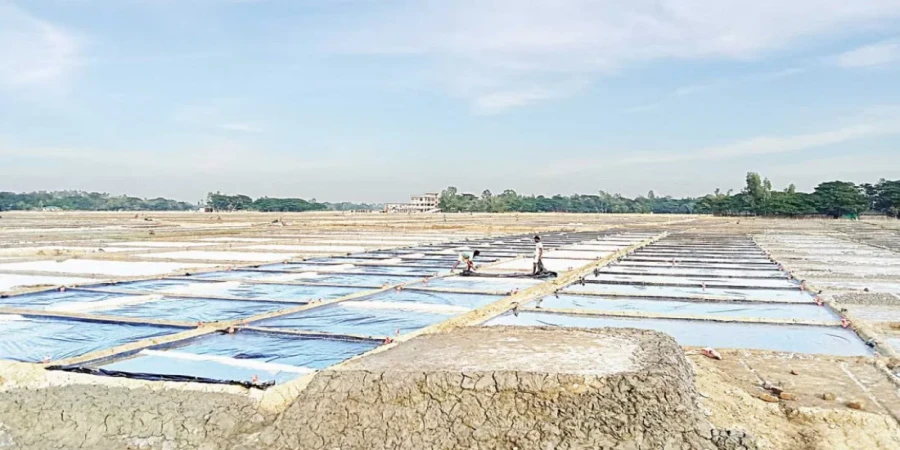
ছবি: Photo: Collected
Despite falling short of target, over 2.25 million metric tons of salt were produced this season; BISIC assures no import needed as farmers stockpile 1.4 million tons.
Salt production across Bangladesh’s coastal regions has come to a premature halt due to adverse weather and unexpected rainfall. The Bangladesh Small and Cottage Industries Corporation (BISIC) has confirmed that salt harvesting activities officially concluded on May 17, several weeks ahead of schedule. However, the season still saw an impressive output of 2,251,651 metric tons of salt—marking the second-highest yield in the past 64 years.
According to BISIC data, the previous season of 2023–24 had set the record with a total yield of 2,437,890 metric tons. Salt farming for the current season had begun on November 4 last year, across 69,198 acres of land in Cox’s Bazar's eight upazilas—including Sadar, Teknaf, Ramu, Chakaria, Pekua, Maheshkhali, Eidgaon—and in Banshkhali of Chattogram district. Authorities had originally targeted a production of 2.61 million metric tons for this season.
The abrupt conclusion of salt farming came after intermittent rainfall in April and heavier downpours in May rendered salt pans unusable. While the target fell short by approximately 358,349 metric tons, BISIC maintains there is no need for imports. They estimate that more than 1.4 million metric tons of salt remain unsold and stocked by farmers, sufficient to meet national demand for the next 7–8 months.
On May 24, the coastal salt fields of Khurushkul in Cox’s Bazar presented a grim sight: rainwater flooding through abandoned pans, polythene sheets removed in advance, and farmers inspecting their stockpiles for potential water damage.
Local salt farmer Nurul Kabir remarked on the sensitive nature of their trade: “A single spell of rain can halt production for seven to nine days. This time, frequent showers in late April and May forced us to stop entirely. If the skies had stayed dry, we could’ve produced an additional 20,000 metric tons.”
Farmer sentiment this season has been notably somber. The market price for raw salt hovered between Tk 270 and Tk 280 per maund, translating to only Tk 6.5 to Tk 7 per kilogram—while retail prices for packaged salt ranged from Tk 30 to Tk 45 per kg. With average production costs estimated at Tk 350 to Tk 400 per maund, many farmers ended up operating at a loss.
Currently, around 41,355 small-scale salt farmers and approximately 100,000 laborers are directly involved in the production, transport, and trade of salt in the region, affecting the livelihoods of several hundred thousand people. BISIC’s Deputy General Manager of the Salt Industry Development Project in Cox’s Bazar, Md. Zafar Iqbal, acknowledged the price distress but expressed hope: “Since a significant quantity remains stored at the field level, we believe market prices will increase during the monsoon months.”
Field inspector Md. Idris Ali also noted that although April provided relatively favorable weather, reduced moisture and an early monsoon meant the expected yield was not achieved. Despite an increase in cultivated land and participating farmers, low prices delayed production starts for some, and prompted early exits for others.
He added that a formal field survey is nearing completion, which will reveal the exact quantity of stored salt still available in pits, roadside heaps, and local mills. Present preliminary figures indicate at least 1.4 million metric tons of salt remains unsold.
As the country braces for the monsoon, farmers and traders alike are watching the market closely. With the salt fields now inactive until next November or December, the hope is that rising demand during the rainy months will offer farmers better prices—and perhaps some relief after a challenging but high-yield season.
repoter






